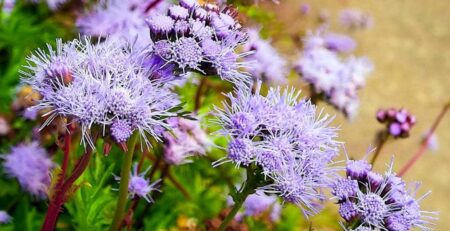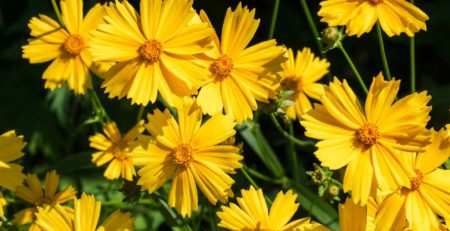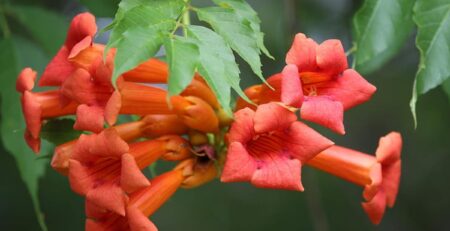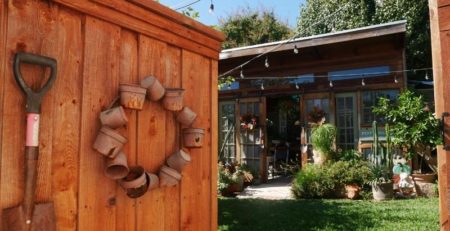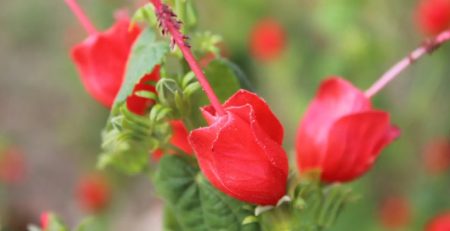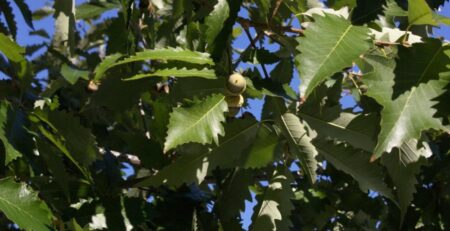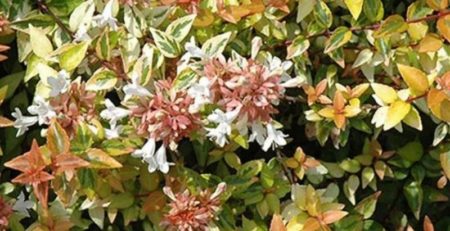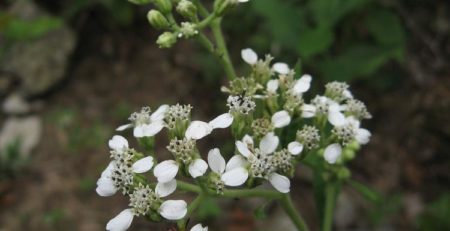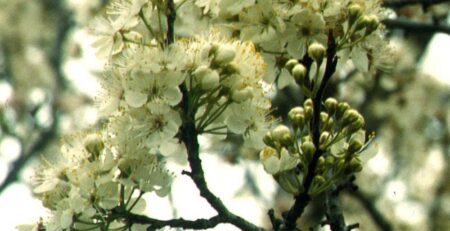Monarda fistulosa


Botanical Name: Monarda fistulosa
Common Name: Beebalm, Wild Bergamot, Monarda, Wild Bee Balm
Synonyms:
Category: Perennial
Family: Lamiaceae
Lifecycle: Perennial
Lifecycle (Alt): Annual
USDA Symbol: MOFI
Hardiness Zone North: 3A
Hardiness Zone South: 9B
Sun Requirement: Full Sun (6+ hours of sun per day)
Sun Requirement (Alt): Partial Shade (2-4 hours of sun per day)
Water Requirement: Medium
Growth Rate: Moderate
Maintenance: Low
Plant Adult Height: 2-4 ft.
Plant Adult Spread: 2-3 ft.
Plant Spacing: 2-3 ft.
Soil Preference: Adaptable
Soil pH Preference: Slightly Acidic (6.1-6.5)
Propagation: Division, Seed
Attracts: Bees, Birds, Butterflies, Hummingbirds, Moths
Resists: Rabbit, Deer, Disease
Tolerates: Freeze, Drought, Erosion, Clay Soil, Shallow Rocky Soil, Dry Soil, Heat
Miscellaneous: Tolerates Poor Soil, Wildflower, Native Plant
Description: Beebalm, known for its distinctive, aromatic foliage and charming whorls of tubular flowers, is a popular perennial in residential gardens. It produces blooms in vibrant shades of lavender, pink, and occasional white during the peak summer months, typically from early July to late August. These colorful flowers not only add visual splendor but are also highly enticing to pollinators such as bees, butterflies, and hummingbirds, making Beebalm an excellent choice for a pollinator-friendly garden. Furthermore, its leaves can be used to make a pleasant herbal tea, historically prized for its soothing qualities. Beebalm thrives in full sun to partial shade and prefers well-drained soils, though it is adaptable to clay soils and is drought tolerant once established. Regular deadheading of spent flowers can promote continued blooming and prevent self-seeding, which can lead to over-spreading in some garden settings. Beebalm is also appreciated for its resistance to deer and is less favored by rabbits. While generally robust, it can be susceptible to powdery mildew, particularly in humid conditions with poor air circulation. To mitigate this, ensuring sufficient spacing between plants for air flow and opting for mildew-resistant varieties can be beneficial. Additionally, while its spreading habit can be a boon for larger garden areas, in more confined spaces it may require regular maintenance to keep it within bounds, as it can become somewhat invasive if not managed properly. Overall, Beebalm is a delightful and low-maintenance addition to any garden, celebrated not only for its beauty and utility but also for its ability to thrive under a variety of conditions while adding to biodiversity.
Propagation & Planting: To propagate and plant Beebalm effectively, start with either division or seed propagation methods. For division, carefully dig up an existing mature plant in early spring or autumn, ensuring a good clump of roots and shoots is intact. Divide the root ball into smaller sections with a sharp, sanitized knife, keeping at least two to three vigorous shoots per section. Replant divisions immediately at the same depth they were originally growing, spacing them about 12 to 18 inches apart in well-drained soil. If propagating by seed, sow seeds indoors 8 to 10 weeks before the last frost using a standard seed-starting mix. Cover seeds lightly with soil, as they need light to germinate. Maintain consistent moisture and a temperature of around 70 degrees Fahrenheit. Once seedlings have developed several true leaves and there’s no risk of frost, harden them off by gradually introducing them to outdoor conditions over a week before planting out at a similar spacing to divisions. Ensure the planting area receives full sun to partial shade and has soil that is rich in organic matter but well-draining. Regular deadheading will encourage prolonged flowering and prevent excessive self-seeding.
Plant Care: Beebalm thrives in full sun to partial shade and prefers well-drained soil rich in organic matter. To ensure optimal growth, water the plant regularly, aiming to keep the soil consistently moist but not waterlogged, especially during dry spells. For best results, add a layer of mulch around the base to retain moisture and regulate soil temperature. Fertilize lightly in the spring with a balanced, slow-release fertilizer to support vigorous growth and abundant flowering. Prune back the stems in early spring to promote denser foliage and more robust blooms. Deadheading spent flowers will encourage a second flowering and help prevent self-seeding if not desired. In preparation for winter, cut the plant back to just a few inches above the ground, after the flowers fade in late fall. This not only tidies the plant but also helps to prevent disease. Throughout the year, be vigilant for symptoms of powdery mildew or other fungal infections, especially in humid conditions, and treat promptly with appropriate fungicides if necessary. Regularly check for and remove any infected plant parts to maintain the health and aesthetics of Beebalm.
Fertilize: Beebalm does not generally require much if any fertilization. Should you choose to feed, to effectively fertilize Beebalm, use a balanced, slow-release granular fertilizer with an NPK ratio of 10-10-10, applied in early spring as new growth appears. This formulation ensures a proper supply of nitrogen, phosphorus, and potassium, promoting healthy foliage and vibrant flowers. Spread the granules around the base of the plant, avoiding direct contact with the stems or leaves. Use about 1 tablespoon per square foot of soil area, incorporating it slightly into the soil and watering thoroughly after application to help dissolve the nutrients. Annual reapplication is sufficient since Beebalm does not have heavy feeding requirements. For organic gardening preferences, an alternative is to apply a similarly balanced, organic fertilizer or well-rotted compost in the same manner and quantity.
Prune: Pruning Beebalm is essential to promote healthy growth and abundant flowering. Suitable pruning times are early spring and after the initial bloom phase in summer. Start pruning in early spring by cutting back all of the previous year’s growth to about 6 inches from the ground, allowing room for new shoots. This helps in managing the plant’s height and prevents overcrowding. After the first bloom in summer, deadhead spent flowers to encourage a second bloom cycle. Additionally, thin out any dense sections to increase air circulation, reducing the risk of fungal infections. Avoid pruning in late fall or winter as the foliage provides insulation against cold temperature and habitats for beneficial insects. Remember to sterilize your pruning shears before use to prevent the spread of disease.
Pest & Disease: While fairly resistant to disease, Beebalm is susceptible to powdery mildew, a fungal infection that manifests as a white powder on the foliage, primarily in humid conditions. To manage this, ensure good air circulation by spacing plants adequately and avoiding overhead watering. For treatment, apply a fungicide recommended for powdery mildew or consider homemade solutions like baking soda mixed with horticultural oil and water. Beebalm can also attract aphids, which appear as small green or black insects on the undersides of the leaves, sucking sap and weakening the plant. Treat aphids by spraying the plants with a strong water jet to dislodge the pests or use insecticidal soap. Additionally, Beebalm might be affected by rust, recognizable by orange or yellow spots on the leaves. Remove and destroy infected plant parts and ensure thorough cleanup of foliage debris in the fall to prevent overwintering of the fungus. For severe cases, an appropriate fungicide might be required. Regular monitoring and maintaining proper plant health are crucial for preventing and managing these common issues, keeping Beebalm thriving and healthy.


